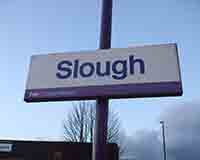 The Thames Valley is enjoying a veritable bevy of infrastructure improvements with the announcement about the long fought for Western Rail Access to Heathrow (WRATH) the icing on the cake. But where will its impact be felt most in the Thames Valley?
The Thames Valley is enjoying a veritable bevy of infrastructure improvements with the announcement about the long fought for Western Rail Access to Heathrow (WRATH) the icing on the cake. But where will its impact be felt most in the Thames Valley?
WRATH is a plan by Network Rail to connect Heathrow to the Great Western main line via a three-mile tunnel under the M25. At present, passengers wishing to access Heathrow by rail have to travel into Paddington station before changing to dedicated airport services.
The timeline for the project includes public consultations for the first half of the year, with an application submitted to the Planning Inspectorate in 2016, work to start in 2017 and finish by the end of 2021.
The service pattern is not finalised, but the expectation is for four trains an hour between Reading and Heathrow, calling at Slough, and Maidenhead or Twyford. There are opportunities to run trains through Heathrow and onto London, providing additional route opportunities.
Collectively, the infrastructure improvements in and around the Thames Valley will have a huge impact in the western corridor, where 70% of businesses have international HQs. WRATH could in itself have a sizeable effect on the area, particularly Slough, from where it will take no more than seven minutes to reach Terminal 5.
While it is difficult to isolate WRATH from Crossrail, which will be operational by 2019, agents expect a much-needed shot in the arm for Slough town centre.
“Slough has been heavily marked down in people’s estimations,” says Nick Coote, head of Thames Valley at Lambert Smith Hampton. He points to the Urban Building which completed four years ago but is not yet fully let as not giving the town a good reputation. “Slough has had a bit of shoeing, particularly in investors’ minds,” he adds.
Coote says Slough has been caught in a vortex where there has been a dearth of quality stock in the town centre, but this will change with infrastructure improvements such as WRATH.
Knight Frank partner Ryan Dean agrees: “I have tried to buy sites around Slough station over the past three years directly as a result of the improvements.”
However, he believes it will be immediately around Slough station which will see the initial impact: “One of the problems Slough has is it is quite miserable getting out of the station. If the redevelopment is done properly it will become a more welcoming town centre with amenities and decent office buildings, with residential longer term.”
And there are developments in the pipeline. The Hermes-owned 1 Brunel Way, a 110,000 sq ft office development directly opposite the station, is expected to be on site in the next six to nine months. The Heart of Slough regeneration project, a joint venture between Development Securities and the local authority has office space planned for the bus station site, but there is a question mark over whether it will be ready to spec build this year.
Expect headline office rents in Slough to rise from the present £26.50 per sq ft. “I would not expect Brunel Way to be quoting less than £30 per sq ft,” says Cootes. “Some would be shocked at that figure as most are quoting high teens for older stock, but there has just been so little quality [space] let.”
“Compared to the rest of the major Thames Valley towns, £26.50 per sq ft is starting to look light,” says Dean. “We will see some decent rental growth in Slough once speculative development starts and if you can build anything around the station it should be well received by occupiers.”
While there could be a big change to come in Slough, WRATH and Crossrail are not expected to have the same impact on Reading.
“My sense is that Crossrail is not a big delta for Reading as it is not as fast as the non-stop trains to Paddington,” says James Finnis of JLL.
“WRATH is perhaps more useful. There is the RailAir bus that goes from the train station to Heathrow, but if you can sit on a train that whizzes into Heathrow that can only be beneficial.”
That is not to say Reading is not going to witness growth. Indeed, the Centre for Cities predicts Reading will be the fastest-growing city other than London in the next five years, driven by IT workers pouring out of Microsoft, Oracle and Dell setting up shop.
M&G Real Estate, for example, has taken a particularly forthright position, investing £94.5m in Reading city centre’s 220,000 sq ft One Reading Central, close to its 370,000 sq ft Forbury Place scheme.
Maidenhead continues to be something of its own beast and is recovering from something of a “heart attack” experienced in 2014 after one of the lowest take-ups on record, says LSH’s Coote. New office developments such as Rockspring’s Tor and Capella Estates’ Point have struggled to find tenants.
Coote adds, however, that “the market may want to have another look at Maidenhead”, with developments such as WRATH. Indeed, in late February, London & Aberdeen submitted a planning application for a 600,000 sq ft mixed-use regeneration scheme in Maidenhead town centre, The Landing, with determination anticipated in Q2 2015.
Being better connected can only help Slough, Reading and Maidenhead’s office markets, how much it helps will unfold as the new rail links are put in place.










